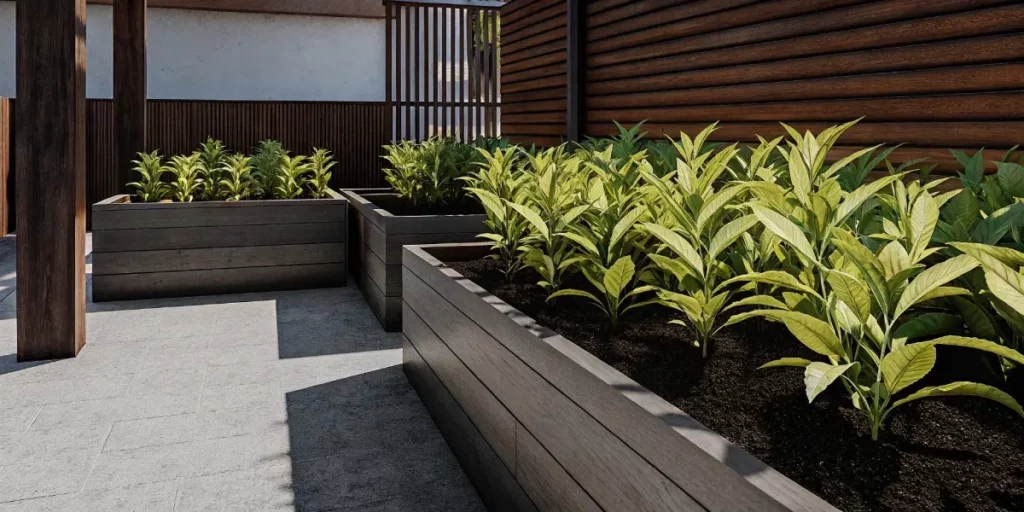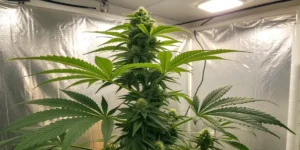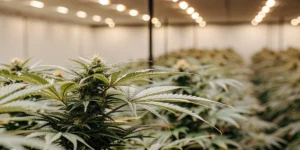Lemon Shining Silver Haze, a potent sativa-dominant hybrid, is renowned for its vibrant citrus aroma and uplifting effects. Growing this cannabis strain can be a rewarding experience for both novice and experienced cultivators. Start by choosing quality seeds from a reputable seed bank, which ensures you get a genetically stable plant. This strain typically thrives in both indoor and outdoor setups, but each environment requires specific considerations to maximize growth. By following these steps, you can cultivate this sativa-dominant strain to its full potential.
For indoor growing, create an optimal environment by maintaining temperatures between 20–28°C (68–82°F) and a relative humidity of 40–70%. Utilize high-quality LED or HPS lights to provide adequate illumination, mimicking the sun’s natural cycle. It’s advisable to implement an 18/6 light cycle during the vegetative stage, reducing it to 12/12 to initiate flowering. Use well-aerated, nutrient-rich soil or hydroponic systems to promote strong root development, ensuring the plant has access to essential nutrients like nitrogen, phosphorus, and potassium.
When growing outdoors, choose a location with abundant sunlight to naturally support the plant’s growth. This strain flourishes in Mediterranean or temperate climates, so ensure it receives ample light and warmth. Plant after the last frost to give your crop a healthy start. Regularly check weather conditions and protect your plants from harsh winds and rain with shelters if necessary. Regular pruning and topping can help in managing the plant’s height and improving light penetration to lower branches.
Throughout the growing process, it is crucial to maintain regular watering while avoiding over-saturation, which can lead to root rot. Create a watering schedule, considering the plant’s lifecycle stage—less during the early stages and more during the flowering phase. Keep an eye out for pests and mold, particularly in humid conditions, and apply natural pest control methods as needed. Ensuring proper air circulation around your plants can also minimize pest issues and reduce the risk of fungal infections.
The flowering stage lasts approximately 8-9 weeks, with an outdoor harvest typically occurring in October. When harvesting, look for a mix of amber and milky white trichomes to determine the optimal time for cutting. Curing your buds properly is essential to enhance their flavor and potency. Dry them in a controlled environment and store in airtight containers in a cool, dark place to maximize the citrus aroma and psychoactive effects of Lemon Shining Silver Haze.
Strain Overview: Traits, Effects & Genetics
Lemon Shining Silver Haze is a distinguished sativa-dominant hybrid known for its vibrant citrusy aroma and potent effects. This strain typically features a THC content that ranges from 18% to 25%, making it a favorite among seasoned cannabis consumers. Its buds are characterized by a dense, frosty appearance, covered in a rich layer of trichomes that hint at its potency. Apart from the visually appealing buds, the strain’s aroma marries the fresh scent of lemon with earthy undertones, creating an inviting and invigorating fragrance that excites the senses even before use.
The effects of this sativa-dominant strain are uplifting and energetic, providing a cerebral high that stimulates creativity and motivation. It’s an ideal option for daytime use, particularly for those needing to stay productive, as it enhances focus and provides a clear-headed experience. Users often report feeling more social and talkative, making it suitable for social gatherings or collaborative work environments. However, due to its high THC content, it may not be suitable for beginners or those prone to anxiety, as it can sometimes induce feelings of unease if consumed in larger quantities.
Genetically, this variety is a remarkable blend derived from two famous parent strains, Lemon Skunk and Amnesia Haze. The combination of these genetic lines endows the strain with both complex flavors and a robust growth pattern much appreciated by cultivators. It thrives particularly well in warm, sunny climates and can be cultivated both indoors and outdoors. Growers favor it for its resilience to common pests and diseases, as well as its generous yield, which usually comes after a flowering time of approximately 8 to 10 weeks.
Overall, this citrus-forward hybrid stands out in the cannabis world for its dynamic blend of energizing effects, enticing flavors, and reliable growth characteristics. As a strain, it maintains a strong reputation for offering an enchanting experience that satisfies both recreational and medicinal users seeking to combat stress and depression without succumbing to sedation. Its robust genetic lineage ensures that it remains a mainstay for growers and enthusiasts alike, promising a consistent product that delights from cultivation to consumption.
Optimal Environment to Grow Lemon Shining Silver Haze Successfully
Lemon Shining Silver Haze, a high-yielding, sativa-dominant strain, thrives in a specific set of environmental conditions that mimic its natural habitat. To cultivate this strain successfully, it’s essential to maintain an ideal climate that promotes vigorous growth and enhances its characteristic citrusy aroma and uplifting effects. The optimal environment for growing this sativa-dominant strain includes specific temperature, humidity, and lighting conditions, which work together to support healthy plant development.
Temperature plays a crucial role in the growth of this variety. During the vegetative stage, maintaining a daytime temperature between 70°F to 85°F (21°C to 29°C) is recommended to encourage robust growth. At night, slightly lower temperatures around 60°F to 70°F (15°C to 21°C) can replicate natural variations and stimulate proper metabolic functions in the plants. During the flowering stage, reducing night temperatures by a few degrees can help in preserving the terpene profile and enhancing the buds’ potency.
Humidity control is equally important for optimizing the growth environment of this strain. During the early vegetative stage, the humidity can be kept between 60% and 70% to facilitate healthier leaf development. As the plants transition to the flowering stage, gradually reducing the humidity to around 40% to 50% can prevent mold formation and enhance resin production. Proper airflow through oscillating fans or ventilation systems ensures that humidity levels remain within optimal ranges, preventing potential issues related to moisture build-up.
Lighting is another critical factor in cultivation. This variety flourishes under full-spectrum lighting, simulating natural sunlight. High-intensity discharge (HID) lamps or LED grow lights should be employed to provide consistent and adequate light throughout the growth cycle. During the vegetative phase, using an 18/6 light schedule (18 hours of light, 6 hours of darkness) promotes vigorous growth. During flowering, switching to a 12/12 light schedule encourages bud development. The right balance of light intensity and duration ensures the full genetic potential of the plant is realized.
Grow Room Setup for Lemon Shining Silver Haze Plants
Creating an optimal grow room setup for Lemon Shining Silver Haze plants is essential to achieving a bountiful harvest. This sativa-dominant hybrid is known for its zesty citrus aroma and cerebral effects. It thrives best in a controlled environment that mimics its natural habitat, which includes ample light, moderate humidity, and excellent ventilation. To begin with, your grow room should have adequate space to accommodate the plants’ height, as this sativa-dominant strain tends to stretch significantly during flowering.
Lighting is one of the critical components in the grow room setup. These plants flourish under high-intensity lighting systems, such as LED or HPS lamps, with a recommended light schedule of 18 hours on and 6 hours off during the vegetative stage. During the flowering stage, switch to 12 hours of light and 12 hours of darkness to promote bud development. Ensure your lights are adjustable, allowing you to maintain an optimal distance of approximately 35–50 cm from the plant canopy to prevent light burn and encourage uniform growth.
The environmental conditions in your grow room must be meticulously controlled to suit the needs of this energetic hybrid. Maintain a temperature range between 20–28°C (68–82°F) with a relative humidity of 40–50% during the flowering stage. Utilizing oscillating fans will help circulate air and strengthen the plant stems while also encouraging steady transpiration. Moreover, carbon filters can be integrated into the ventilation system to mitigate the strong, distinctive odor associated with this citrus-scented strain, ensuring discretion and odor control.
The growth medium and nutrient regimen is another crucial aspect of your grow room setup. This cultivar thrives in a rich, well-draining soil mix or a hydroponic system, each offering distinct advantages. When selecting nutrients, focus on balanced NPK ratios, along with micronutrients like calcium and magnesium, which are vital for robust growth. Ensure regular pH monitoring, keeping it between 6.0 and 7.0 for soil and 5.5 to 6.5 for hydroponics, to promote optimal nutrient absorption.
Indoor Growing Tips
Lemon Shining Silver Haze is a sativa-dominant hybrid that thrives indoors, offering cultivators the ability to control its growing environment for optimal results. Known for its zesty citrus aroma and uplifting effects, this strain requires specific conditions to achieve its full potential. When cultivating this sativa-dominant strain indoors, start by ensuring adequate light exposure. It demands substantial light to ensure robust growth and high yields, so consider using high-intensity LED grow lights or HPS lamps to mimic natural sunlight effectively. Maintain a light cycle of 18-6 during the vegetative stage and switch to 12-12 to induce flowering.
Temperature and humidity control are equally important when growing this variety indoors. Aim to keep temperatures between 20-27°C (68-80°F) during the vegetative phase, slightly cooler at night. During flowering, reduce the temperature by a few degrees to replicate autumn conditions, enhancing bud quality and potency. Humidity levels should start around 60% during the vegetative stage and gradually decrease to about 40-50% during flowering to prevent mold and mildew, which can easily afflict tightly packed buds.
Pruning and training your plants can significantly enhance light penetration and air circulation. Techniques like topping, LST (Low-Stress Training), or SCRoG (Screen of Green) can help manage the plant’s height, as this variety can stretch considerably. Effective training and trimming not only optimize the use of vertical space but also encourage the development of more bud sites, leading to improved yields. Regular checks for nutrient needs and pH levels are necessary to ensure the plants remain healthy and vibrant throughout their growth cycle.
Feeding this strain correctly is crucial for maximizing its potential. It typically enjoys a balanced nutrient regimen, but be cautious not to overfeed. Start with a base soil enriched with organic material if possible, and supplement with liquid fertilizers as necessary. During the flowering stage, a phosphorus and potassium boost can aid in bud development. Regularly monitor nutrient levels and adjust according to the plant’s response, ensuring you don’t encounter nutrient burn or deficiencies.
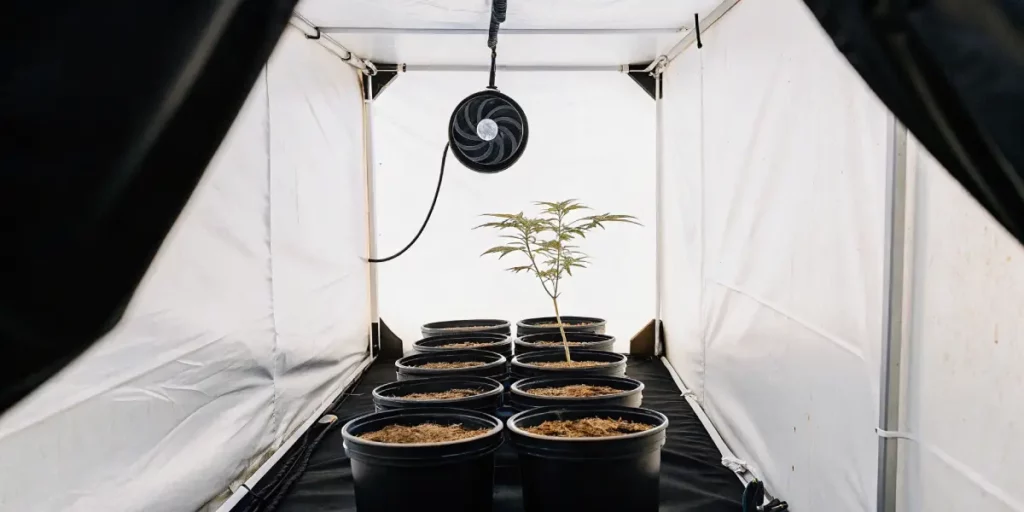
Outdoor Growing Tips
Growing Lemon Shining Silver Haze outdoors can be a rewarding endeavor given the right conditions. This Sativa-dominant strain thrives in a warm, sunny environment similar to that around the Mediterranean. It’s crucial to select a location where the plant will receive ample sunlight throughout the day. Good positioning helps in maximizing the plant’s growth potential and increasing its yield. This strain can reach impressive heights, often exceeding 2 meters, so it’s essential to ensure that your space can accommodate such growth without hindering sunlight access.
One of the critical aspects of cultivating this citrus-forward sativa outdoors is managing the plant’s nutritional needs. This robust variety responds well to a nutrient-rich soil, so a high-quality organic mix is advisable. Incorporate compost or well-rotted manure to enhance the soil structure and fertility. Additionally, regular feeding with a balanced fertilizer will provide essential nutrients. Pay close attention to nitrogen, phosphorus, and potassium levels during different growth stages, particularly as the plant transitions from vegetative growth to flowering to promote robust buds.
Watering is another crucial aspect of outdoor growing. While this strain requires consistent moisture, overwatering or poor drainage can lead to root rot. Implementing well-draining soil and ensuring pots have adequate drainage holes helps prevent these issues. Consistent monitoring of soil moisture levels is essential. Water deeply, but less frequently, allowing the topsoil to dry out between watering sessions, which promotes a healthy root system.
Pest management is essential when growing outdoors. Common cannabis pests such as aphids, spider mites, and caterpillars can pose challenges. Deploying organic pest control methods like neem oil or insecticidal soap can help maintain healthy plants. Additionally, encouraging natural predators like ladybugs and lacewings can reduce pest populations. Regular plant inspections will also help identify issues early and allow for swift intervention, avoiding damage to the plants.
How to Germinate & Propagate Lemon Shining Silver Haze
Germinating Lemon Shining Silver Haze seeds is the crucial first step in establishing a successful cannabis grow. Begin by acquiring high-quality seeds from a reputable source to ensure optimal plant health and yield. Start the germination process by using the paper towel method, which is known for its simplicity and effectiveness. Simply moisten two paper towels, place your seeds between them, and ensure they remain damp. Place the towels in a warm, dark environment, ideally between 20-25°C (68-77°F), to encourage the seeds to sprout.
After 24 to 72 hours, you should start to notice tiny white taproots emerging from the seeds. Once the taproots are approximately 1-2 centimeters long, it’s time to transition them to soil. Choose a light and airy seed-starting mix to avoid compacting the roots, ensuring they can breathe and expand freely. Plant the seeds about 1-2 centimeters deep, with the taproot pointing downward. Water them lightly to keep the soil moist but not waterlogged. Maintain a warm, stable environment with plenty of indirect light to encourage robust seedling growth.
Propagation of Lemon Shining Silver Haze can be achieved through cloning, allowing you to reproduce your best plants with consistent vigor and characteristics. To start cloning, select a healthy, robust mother plant, free from pests and diseases. Cut a 10-15 centimeter long branch from the plant, preferably from a lower limb, using sterilized scissors to prevent contamination. Trim off the lower leaves, dip the cut end into a rooting hormone, and plant it in a small pot filled with a light, moist propagation medium.
Keep the clone’s environment humid and warm, ideally in a propagation dome or greenhouse. Provide plenty of indirect light and keep the medium moist but not waterlogged. In one to three weeks, roots should form, signaling a successful propagation. Once the roots are established, transition the clone to a larger container and begin caring for it as you would a mature plant. Remember, successful cultivation requires patience and attention to detail during both germination and propagation stages.
Vegetative Stage: Nurturing Your Lemon Shining Silver Haze Plants
The vegetative stage of your Lemon Shining Silver Haze plants is a crucial period where your plants experience rapid growth and develop their foundational structure. During this phase, it is essential to ensure they receive adequate light, nutrients, and care. Since this sativa-dominant strain tends to stretch more than many indica varieties, preparing enough vertical space is necessary. Indoor growers will need to maintain an 18 to 24-hour light schedule to encourage robust growth, whereas outdoor cultivators should ensure their plants receive full sunlight for optimal development.
Nutrition plays a vital role during the vegetative stage, as it sets the stage for a healthy bloom later. High-quality nitrogen-rich fertilizers are essential for promoting leafy growth and maintaining a vibrant green color. A balanced inclusion of micronutrients such as magnesium, calcium, and iron will also support the plant’s ability to photosynthesize effectively and resist potential pest infestations. Always follow the manufacturer’s directions for fertilizer application, and monitor your plant’s response to avoid nutrient burn or deficiency signs.
Watering techniques should be adapted to encourage the development of a strong root system. Plenty of water is needed, but overwatering can drown roots and lead to rot, so ensure containers have proper drainage. Test soil moisture levels by inserting your finger about an inch into the soil; if it’s dry at this depth, it’s time to water. Additionally, you can practice low-stress training techniques such as topping and bending to manage the plant’s height and to encourage multiple colas for increased yield.
Environmental control is another critical aspect during this growth phase. Ideal temperatures are around 70–85°F (21–29°C) with humidity levels maintained between 40–60%. This environment can be achieved using fans, heaters, or air conditioners, alongside hygrometers for monitoring. Regularly check your plants for insects or disease expressions and act swiftly if symptoms arise. Constants such as a gentle breeze from oscillating fans can promote sturdy stem development and help prevent mold and pest buildup.
The vegetative stage can last anywhere from 4 to 8 weeks depending on your growing setup and goals. By dedicating attention to these foundational aspects, you’ll ensure your Lemon Shining Silver Haze plants have the strength and vigor to thrive through the flowering stage, ultimately resulting in a bountiful harvest. Patience and attentiveness during this stage can significantly enhance the quality of your future buds.
Flowering lemon shining silver haze: What to Expect
When cultivating Lemon Shining Silver Haze, the flowering stage is a pivotal period that determines the quality and potency of your final yield. This Sativa-dominant strain is renowned for its zesty, citrusy aroma and uplifting effects. During the flowering stage, typically lasting about 8 to 9 weeks, you’ll observe significant changes in the plant’s structure and development. It’s essential to maintain optimal growing conditions to ensure your plants reach their full potential and produce dense, resinous buds.
As the flowering stage commences, this sativa-dominant strain will display marked vertical growth, often doubling in height, which is characteristic of sativa varieties. This rapid growth necessitates ample vertical space and support, as the branches may become laden with heavy buds. The plant will start exhibiting vibrant green hues coupled with amber pistils. To encourage bud development and prevent mold, ensure adequate light exposure and reduce humidity levels, maintaining them between 40-50%.
Throughout flowering, you’ll notice the terpene profile intensifying, releasing a pungent lemon aroma mingled with Haze’s classic earthy undertones. Keep a vigilant eye for any signs of nutrient deficiencies or pests, both of which can adversely affect the quality of your crop. Regular feeding with phosphorus and potassium-rich nutrients is recommended to support bud development. As harvest time approaches, cease nutrient application and flush with pure water to enhance the flavor profile of the finished product.
Given Lemon Shining Silver Haze’s sativa genetics, expect buds that are not only dense but also expansive in size. The trichomes will become increasingly prominent, lending the buds an almost shimmering appearance. This resin production is a hallmark of the strain and speaks to its potency. By the end of the flowering stage, the plants will have a rich mix of colors and a fragrant terpene profile, setting the stage for a bountiful and aromatic harvest.
Feeding Lemon Shining Silver Haze: Fertilizers & Nutrient Schedule
Lemon Shining Silver Haze is a sativa-dominant hybrid renowned for its vibrant lemon flavor and potent effects. Cultivating this strain requires careful attention to its nutritional needs to ensure optimal growth and yield. Providing the right balance of nutrients is crucial, especially during its various growth stages. To start, using a high-quality potting mix enriched with essential nutrients will give your plants a solid foundation. This citrus-scented sativa thrives in a well-draining soil mix with a slightly acidic pH, ideally between 6.0 and 6.5.
During the vegetative stage, this strain demands a diet rich in nitrogen to facilitate robust growth and leafy development. Incorporate a balanced fertilizer with a 3-1-2 NPK ratio to ensure your plants receive adequate nitrogen while also gaining access to phosphorus and potassium. It’s important to monitor how the plants respond and adjust nutrient levels accordingly. Introduce calcium and magnesium supplements, as these micronutrients play critical roles in overall plant health and vigor. Maintaining a consistent feeding schedule is vital for promoting healthy development during this period.
Transitioning into the flowering phase, the nutritional needs of this variety shift substantially. Reducing nitrogen while increasing phosphorus and potassium levels will support bud formation and enhance flowering. Opt for a bloom-specific fertilizer with a higher P-K and a lower N, such as a 1-3-2 ratio. Regularly check the pH level of your feed solution to avoid nutrient lockout, ensuring optimal absorption. Implementing a feeding schedule with alternating pure water feeds helps prevent nutrient buildup, safeguarding your plants from potential toxicity or deficiencies.
Furthermore, as the harvest approaches, flushing your plants with plain water for the last two weeks of flowering can help eliminate excess nutrients, leading to cleaner smoke and improved flavor. Throughout cultivation, keep a close eye on the leaves for any signs of nutrient deficiencies or toxicities, such as yellowing or browning, and make necessary adjustments promptly. Loyal adherence to a well-planned nutrient regimen will reward you with a bountiful harvest of potent, lemon-scented buds that encapsulate the essence of this flavorful sativa.
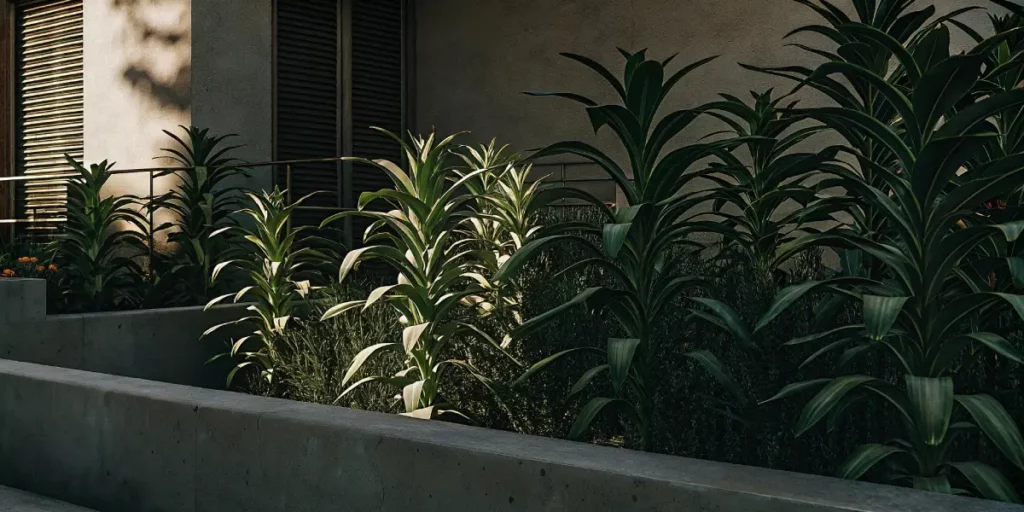
Pest and Disease Prevention for Healthy Cannabis Plants
Growing Lemon Shining Silver Haze can be a rewarding experience, but maintaining healthy plants requires proactive pest and disease prevention. This sativa-dominant hybrid is known for its zesty lemon aroma and potent effects. To ensure your plants remain robust and productive, it is essential to implement an effective prevention strategy to combat common threats, such as pests and diseases. Consistently monitoring your plants, maintaining a clean environment, and utilizing natural preventative measures are key components for success.
One of the primary steps in pest prevention is regular inspection. Check your cannabis plants daily for any signs of insects or damage. Common pests include spider mites, aphids, and whiteflies. Early detection of these pests is critical, as it significantly reduces the risk of infestation. Look for signs such as webbing, discolored leaves, or small insects on the undersides of leaves. If pests are found, organic options like neem oil or insecticidal soap can be effective without harming the plants.
Maintaining a clean growing environment is another crucial aspect of disease prevention. This includes ensuring proper air circulation, maintaining optimal humidity levels, and keeping your plants at appropriate distances from one another. High humidity levels can create ideal conditions for mold and mildew, such as powdery mildew and bud rot, which are common issues in cannabis cultivation. Use dehumidifiers when necessary and invest in oscillating fans to improve airflow around your plants.
Incorporating biological controls can also be beneficial. By using beneficial insects like ladybugs or predatory mites, you can naturally control pest populations without resorting to chemical pesticides. Additionally, maintaining healthy soil with a balanced mix of nutrients can help your plants develop resilience against diseases and pests. Compost teas or organic fertilizers rich in essential nutrients can strengthen the plant’s natural defenses.
Implementing an integrated pest management (IPM) approach, which combines cultural, biological, and mechanical control methods, will help you protect your cannabis crop from potential threats. By diligently following these practices and adapting them to your specific growing conditions, you can cultivate vigorous plants that produce high-quality yields.
Harvesting & Drying Lemon Shining Silver Haze the Right Way
Harvesting Lemon Shining Silver Haze at the optimal time is crucial to maximize its potent effects, citrus scent, and overall quality. Typically, this sativa-dominant hybrid reaches maturity around 8-9 weeks into the flowering period. Pay close attention to the trichomes on your plants; the best time to harvest is when these shift from clear to a milky white with a hint of amber, indicating peak cannabinoid content. Harvesting too early can lead to diminished potency and flavor, while delaying harvest may degrade some of the finer terpene profiles due to over-ripening.
When cutting your plants, ensure you do so with sharp, sanitized scissors or pruning shears to prevent plant tissue damage or infections. Begin by trimming away large fan leaves, which helps improve airflow and reduces moisture. It’s recommended to harvest during a period of darkness—either at night or just before your lights come on. This timing helps preserve the resin produced during the night cycle. Divide your thick branches for manageable drying and ensure not to overcrowd your drying space, aiming to maintain optimum air circulation.
After harvesting, proper drying is essential to preserve the strain’s delightful lemon aroma and ensure smooth smoke. Hang your trimmed branches upside down in a room with consistent temperatures between 60–70°F (15–21°C) and humidity levels around 50–60%. Use a hygrometer to monitor these conditions closely. Adequate airflow, achieved by using fans without blowing directly on the buds, prevents mold formation while fostering uniform drying. The drying process typically takes 7–10 days. The buds are ready for curing when the small stems snap rather than bend.
Curing is the next crucial step. Carefully place your dried buds in airtight glass jars, filling them up to 75% full to allow some airspace. Store these jars in a cool, dark place, and open them daily during the first two weeks to release moisture and ensure even curing. This process typically takes 2–4 weeks, enhancing the flavor profile and smoothness. Every day, assess the moisture level of the buds to prevent any mold development.
When stored correctly, the aromatic profiles and the psychoactive benefits will be well-preserved, offering you a top-notch experience with every use. By meticulously following these steps, you’ll ensure the craftsmanship involved in growing is reflected in the quality of your final product, bringing out the best your harvest has to offer.
Strain Type: Indica, Sativa or Hybrid?
Lemon Shining Silver Haze, a distinguished member of the cannabis family, is primarily recognized for its sativa-dominant genetics. This strain inherits its characteristics from a lineage of illustrious parents, tracing back to the original Haze and Skunk #1, as well as Lemon Skunk. With approximately 75% sativa and 25% indica influence, it stands as a quintessential example of a sativa-dominant hybrid that leans heavily towards its sativa ancestry. This genetic makeup makes it an ideal choice for individuals seeking cerebral effects, clarity, and an uplifted mood, all while enjoying a distinctive lemon citrus aroma.
The sativa prominence in this strain is evident in its effects and growth characteristics. It is revered for its energizing and invigorating high, typically prompting creativity, sociability, and mood enhancement. With THC levels often soaring above 20%, the psychological experience is potent, making it a favorite among users who appreciate the creative and euphoric buzz associated with sativas. Furthermore, its growth patterns are also indicative of its sativa nature, with plants growing tall and producing elongated buds covered in copious trichomes. This ensures not only a visual appeal but also a high yield potential in favorable conditions.
Despite its strong sativa influence, the indica presence should not be overlooked. It imparts a balancing effect, ensuring the high is not overwhelming. Some reports suggest a subtle body relaxation that complements the cerebral effects, enabling users to enjoy the mental uplift without feeling jittery or anxious. Growers often appreciate this balanced profile as it allows for a versatile experience suitable for both daytime and evening use. In cultivation, the indica lineage may contribute to sturdier plant structure and resilience, factors that can be advantageous in various growing environments.
Overall, this sativa-dominant hybrid provides an appealing combination of stimulating vigor with a touch of calmness. Its uplifting nature supports those who are looking for stimulation and creative motivation, while the hybrid attributes ensure a smoother, more rounded consumption experience. Whether you’re an enthusiast growing this variety yourself or an avid user looking to understand its intricacies, this strain offers a remarkable example of sativa-driven qualities blended with the subtler, more tranquil effects of an indica footprint.
Why Grow Lemon Shining Silver Haze? Key Benefits for Cultivators
Lemon Shining Silver Haze is an exceptional strain that captivates cultivators with its unique attributes and promising yield. Known for its tantalizing citrus aroma and uplifting effects, this sativa-dominant hybrid has become a favorite among both recreational users and medical patients. This exceptional strain captivates cultivators with its unique attributes and promising yield. Known for its tantalizing citrus aroma and uplifting effects, this sativa-dominant hybrid has become a favorite among both recreational users and medical patients. One of the primary reasons growers choose this variety is its robust growth potential and high resilience to common threats like pests and molds. Its lineage, derived from the blending of Lemon Skunk and Shining Silver Haze, imparts vigorous growth and resilience, making it easier to manage compared to more delicate strains.
Apart from its inherent resilience, this strain is celebrated for its substantial yield. Cultivators can expect a generous harvest, with indoor grows yielding up to 425–475 grams per square meter and outdoor grows producing between 450–500 grams per plant. This prolific yield is especially appealing to those looking to maximize their investment and effort. Furthermore, the strain’s compact flowering period of approximately 8–10 weeks offers a relatively quick turnaround, allowing growers to bring product to market faster or enjoy their own supply sooner.
The invigorating aroma and flavor profile is another significant draw. The pronounced lemon scent, coupled with the sweet and earthy undertones, not only delights consumers but also benefits growers by enhancing marketability. In an industry where unique and high-quality strains stand out, this one offers a competitive edge due to its unmistakable profile. Additionally, its high THC content, often reaching 21%, ensures a powerful and uplifting effect, ensuring strong consumer demand.
In essence, the decision to cultivate this variety is supported by a multitude of advantages. From its resilient nature and substantial yields to its appealing aroma and potent effects, this strain meets and exceeds the needs of modern cultivators. Its ability to thrive in various environments, both indoors and outdoors, further solidifies its position as a top choice among cannabis growers aiming for both quantity and quality. By opting to grow this sativa-dominant hybrid, cultivators are investing in a strain with proven success and enduring popularity.
Potential Challenges When Growing Lemon Shining Silver Haze
Growing Lemon Shining Silver Haze can be both rewarding and challenging for cannabis cultivators. One of the primary challenges is its sensitivity to humidity levels. This strain, being a sativa-dominant hybrid, prefers a balanced environment that is neither too humid nor too dry. Excessive humidity can lead to mold and mildew, particularly during the flowering stage. Therefore, growers must invest in a reliable hygrometer to monitor humidity and dehumidifiers to maintain ideal levels, especially in more humid climates.
Another significant challenge is providing the right nutrient balance. This cannabis strain demands a high level of nutrients, especially nitrogen, during its vegetative stage. However, an excess or deficiency in nutrients can lead to nutrient burn or stunted growth. It’s crucial for growers to adhere to a well-researched feeding schedule and closely monitor the plant’s reaction to any nutrient changes. Investing in high-quality cannabis-specific fertilizers and supplements can help ensure optimal growth without the risk of nutrient-related issues.
The tall and lanky structure of this sativa-dominant variety can also pose a challenge, particularly indoors. It can stretch significantly during its flowering phase, meaning that indoor growers need to plan adequately for vertical space. Techniques such as topping, low-stress training (LST), and the Screen of Green (ScrOG) method can help control the plant’s height and encourage a bushier profile. These techniques not only help to manage space but also maximize light exposure to all parts of the plant, promoting even growth.
Additionally, this strain is susceptible to pests and diseases, which is a common challenge for cannabis growers. Aphids, spider mites, and whiteflies can wreak havoc if not managed promptly. Employing an integrated pest management plan, which includes regular inspections, introducing beneficial insects, and using organic insecticides when necessary, can help mitigate this risk. Keeping the grow area clean and free from debris also reduces the likelihood of pest infestations.
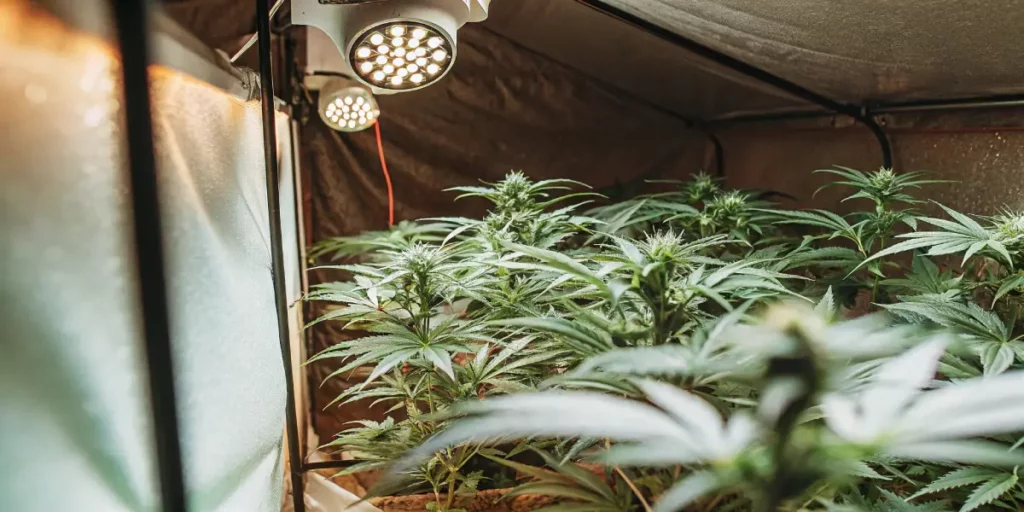
Is Lemon Shining Silver Haze Worth Buying? Here’s What You Need to Know
Lemon Shining Silver Haze is a cannabis strain that stands out due to its unique blend of flavors, effects, and growth characteristics. Known for its citrusy, lemon-dominant aroma, this strain offers a distinctive sensory experience that attracts both recreational users and cannabis connoisseurs. Developed from a heritage of some of the most potent sativas, it brings together the virtues of Lemon Skunk and Amnesia Haze, resulting in a vibrant, uplifting effect that appeals to many users. This makes it a favorite for those who prefer a stimulating and energetic high, making it potentially worth a place in your cannabis collection.
One of the primary considerations when determining if this sativa-dominant strain is worth purchasing is its growth profile. Known for its resilient nature, this variety is relatively easy to cultivate, even for beginners. It favors sunny climates and can be grown both indoors and outdoors. With a flowering time of about 8–10 weeks, it is relatively fast for a sativa-leaning plant. Its yield is notably generous, offering up to 500g/m² indoors and up to 600g/plant outdoors, providing both quantity and quality. This makes it an attractive option for growers looking to maximize their yield in a short period.
Another key factor to consider is the specific effects and medicinal benefits that this strain provides. Known for its potency, it can contain THC levels upwards of 20%, offering a significant psychoactive impact. Users commonly report a euphoric and uplifting high, paired with heightened creativity and motivation. It’s often used as a daytime strain due to its energizing properties, which can help relieve symptoms of depression, stress, and fatigue. However, due to its high THC content, it might not be suitable for recent users or those who prefer milder effects.
This variety is also notable for those who appreciate the finer nuances of flavor and aroma. Its profile is dominated by a sharp citrus aroma with subtle undertones of earthiness and sweetness. This complex flavor profile is a delight for the senses, making the consumption of this strain an experience in itself. For those who value aromatic nuances and robust flavor in their cannabis, this option is definitely worth considering.
Overall, this strain may indeed be worth buying if you are looking for something that balances ease of cultivation, robust yields, potent effects, and an exceptional flavor profile. Whether you are a grower seeking a lucrative and manageable plant or a user in search of a mind-lifting experience, it holds considerable appeal. However, its potency is not to be underestimated, and it’s advisable to start with a cautious approach, especially for novice users.
FAQs
What is Lemon Shining Silver Haze?
Lemon Shining Silver Haze is a popular cannabis strain known for its potent effects and uplifting nature. This strain is a sativa-dominant hybrid derived from Lemon Skunk and Shining Silver Haze. It’s cherished for its bright citrus aroma with sweet and earthy undertones, making it a favorite among cannabis enthusiasts. Users often report feelings of euphoria, creativity, and energy, making it ideal for daytime use.
What are the effects of Lemon Shining Silver Haze?
Lemon Shining Silver Haze is renowned for its energetic and uplifting effects. Consumers frequently experience a boost in mood and creativity, which makes it a great choice for artistic or social activities. It tends to provide a clear-headed high, allowing for focus and concentration. Despite its potency, it typically won’t induce couch-lock, making it suitable for daytime use.
How does Lemon Shining Silver Haze taste and smell?
The flavor profile of Lemon Shining Silver Haze is one of its standout features. It offers a prominent citrus taste, reminiscent of freshly peeled lemons, accompanied by subtle hints of sweetness and earthiness. Its aroma follows suit, with a sharp, zesty lemon scent that is both refreshing and invigorating, making it a sensory delight from smell to taste.
What are the potential medical benefits of Lemon Shining Silver Haze?
Users of Lemon Shining Silver Haze have reported a range of potential medical benefits. It is commonly used to alleviate symptoms of stress, anxiety, and depression due to its mood-enhancing properties. Additionally, its ability to promote focus and clarity can be beneficial for those with attention disorders. Some users also find relief from mild pain and fatigue, due to its uplifting and energizing effects.
What are the growing conditions and requirements for Lemon Shining Silver Haze?
Lemon Shining Silver Haze thrives in warm, sunny environments, although it can also be cultivated indoors with careful temperature and humidity control. It is a relatively fast-flowering strain with a flowering time of about 8-9 weeks. Growers appreciate its high yield potential and resilience to molds and pests, making it a suitable choice for both novice and experienced cultivators seeking a rewarding cultivation experience.

